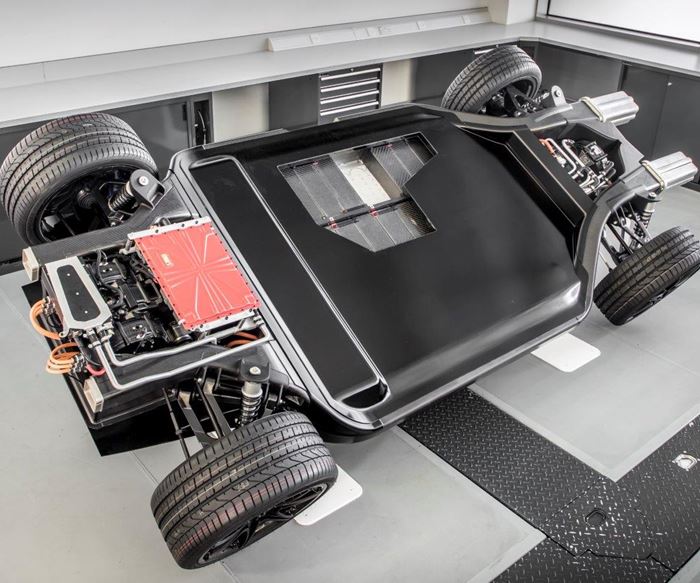Williams Advanced Engineering introduces processes for cost-effective carbon fiber composites
The company’s two latest technologies, 223 and Racetrak, are said to be a step-change in the affordability of composite materials.
Williams Advanced Engineering (Grove, U.K.) has published a white paper to introduce its proprietary, patent-pending carbon fiber composite technologies and their benefits to automotive and other industries. The company’s latest pair of technologies, known as 223 and Racetrak, are said to be a step-change in the affordability of composite materials.
According to the company, 223 and Racetrak offer comparable performance to existing composites solutions, but include additional benefits and will be available at a cost that brings them within reach of mainstream applications. They are said to be end-to-end, whole-life solutions that address every aspect of the manufacture, use and recycling of carbon fiber-reinforced polymer (CFRP) and the way in which carbon fiber’s properties can enable new approaches to vehicle design and manufacture.
According to the white paper, the 223 process is a cost-effective method for creating three-dimensional composite structures from a two-dimensional form, suited for box-shaped geometries such as battery containers for electric vehicles.
Racetrak is a new process for creating high-strength structural members that link two or more points, the white paper says. Potential applications include automotive wishbones or the link arms of aircraft landing gear.
More information about both processes and their applications can be found in the Williams Advanced Engineering’s published white paper.
“Racetrak and 223 are just two examples of a new generation of technologies, developed and commercialized by Williams Advanced Engineering,” says Iain Bomphray, chief technology specialist, lightweight structures, the Williams Advanced Engineering innovator behind these two breakthroughs. “With this approach, we have the potential to develop new, growing areas of business that will also make significant contributions to the industries in which we work.”
“We are focusing our expertise on energy management, aerodynamics, thermodynamics and lightweighting. As tools for efficiency improvement, these are all highly synergistic, so considering them as an integrated system allows us to increase significantly the total benefits,” explains Paul McNamara, Williams Advanced Engineering technical director. “While we have undoubtedly learnt a great deal from success in Formula 1 and Formula E, they are high-profile examples of what we do. Behind closed doors, we are solving challenging problems for world-class companies across a wide range of sectors and working with some of the most highly-regarded manufacturers on next-generation, low carbon technologies.”
Related Content
-
TU Munich develops cuboidal conformable tanks using carbon fiber composites for increased hydrogen storage
Flat tank enabling standard platform for BEV and FCEV uses thermoplastic and thermoset composites, overwrapped skeleton design in pursuit of 25% more H2 storage.
-
Materials & Processes: Fibers for composites
The structural properties of composite materials are derived primarily from the fiber reinforcement. Fiber types, their manufacture, their uses and the end-market applications in which they find most use are described.
-
Cryo-compressed hydrogen, the best solution for storage and refueling stations?
Cryomotive’s CRYOGAS solution claims the highest storage density, lowest refueling cost and widest operating range without H2 losses while using one-fifth the carbon fiber required in compressed gas tanks.

.jpg;width=70;height=70;mode=crop)

















